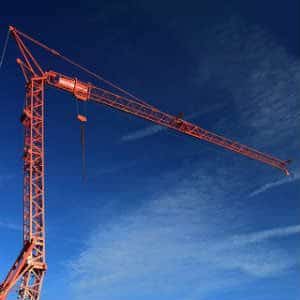It seems like in the past few years, an issue with a crane happens every couple of months and some poor worker pays the price. On April 5th, 2017, the latest crane accident hurt a hard-working New Yorker, leaving him seriously injured.
Hammer Malfunctions Dropping I-Beam
The accident, which took place on a construction site in Queens, involved a crawler crane that was being used to drive steel sheeting into the ground. While the crane was being used to lift a seven-ton steel I-beam, the cable used to lift it which is called a hammer, snapped.
The beam fell landing directly on a construction worker below. Thankfully, it didn’t hit his head or neck, but it did land on his lower body, pinning him to the ground.
Firefighters and EMTs were called to the scene where the teams discussed how best to rescue him. It was important to get him out from under the beam quickly, before the weight of the steel cut off his circulation for too long, causing additional damage to his lower body. Ultimately, it was decided that the best way to rescue him would be to stabilize the beam and then dig out from under him and slide him out from under the beam. So that’s exactly what they did.
Once he was released, EMTs rushed him to the hospital. His full diagnosis has not been released but it was noted that at the very least he had broken both of his legs in several places.
Broken Legs – Not An Easy Fix
When a bone is broken, even the smallest of hairline fractures can be extremely painful, not to mention, the bone requires specialized care and long-term treatment to heal. If the patient suffers from complications, additional time and treatments will be needed, meaning additional medical expenses. Common complications include:
- Infection: A bone infection, also known as osteomyelitis, typically occurs with an open fracture. Fungi or bacteria can cause an infection, requiring a patient to be hospitalized, given
additional antibiotics, and may even lead to a surgical revision.
- Nerve Damage: Nerves run up and down the leg and a break can severe or damage those nerves. In some cases the nerves may heal but in others the damage may be permanent. This can leave a patient with numbness, tingling, or even pain for the rest of their lives.
- Damaged Blood Vessels: Just like nerves, a blood vessel may be damaged by a broken bone, causing pooling and clots.
- Uneven Legs: If the bone doesn’t heal correctly or the growth plate is damaged, one leg may actually end up being shorter than the other, causing complications with walking and other parts of the body for the rest of the patient’s life.
- Arthritis: This can cause crippling pain at the break site and in the joints around the fracture.
For even a “simple” break that only requires a cast, the cost of treatment for a broken leg can be as expensive as $17,000. When complications occur, that number skyrockets.
Workers’ Comp Should Cover The Costs
Workers’ compensation insurance should cover the cost of this employee’s medical bills. However, like so many other things in like, workers’ comp doesn’t always work the way that it should.
In fact, a large percentage of claims are denied from the get-go every year, leaving injured workers to fend for themselves. This can be shocking given the fact that this type of insurance is supposed to cover all employees, regardless of who was at fault for the accident.
When a denial is received, what is an employee supposed to do? In most cases, the best way to proceed is to contact an experienced attorney. An attorney can review the claim forms to see if a simple mistake can correct the issue, represent a worker at an appeal hearing, and handle the insurance company. In addition to this, an attorney can investigate and determine if the applicant is also eligible for other forms of compensation such as a Social Security Disability claim or personal injury lawsuit.

 additional antibiotics, and may even lead to a surgical revision.
additional antibiotics, and may even lead to a surgical revision.